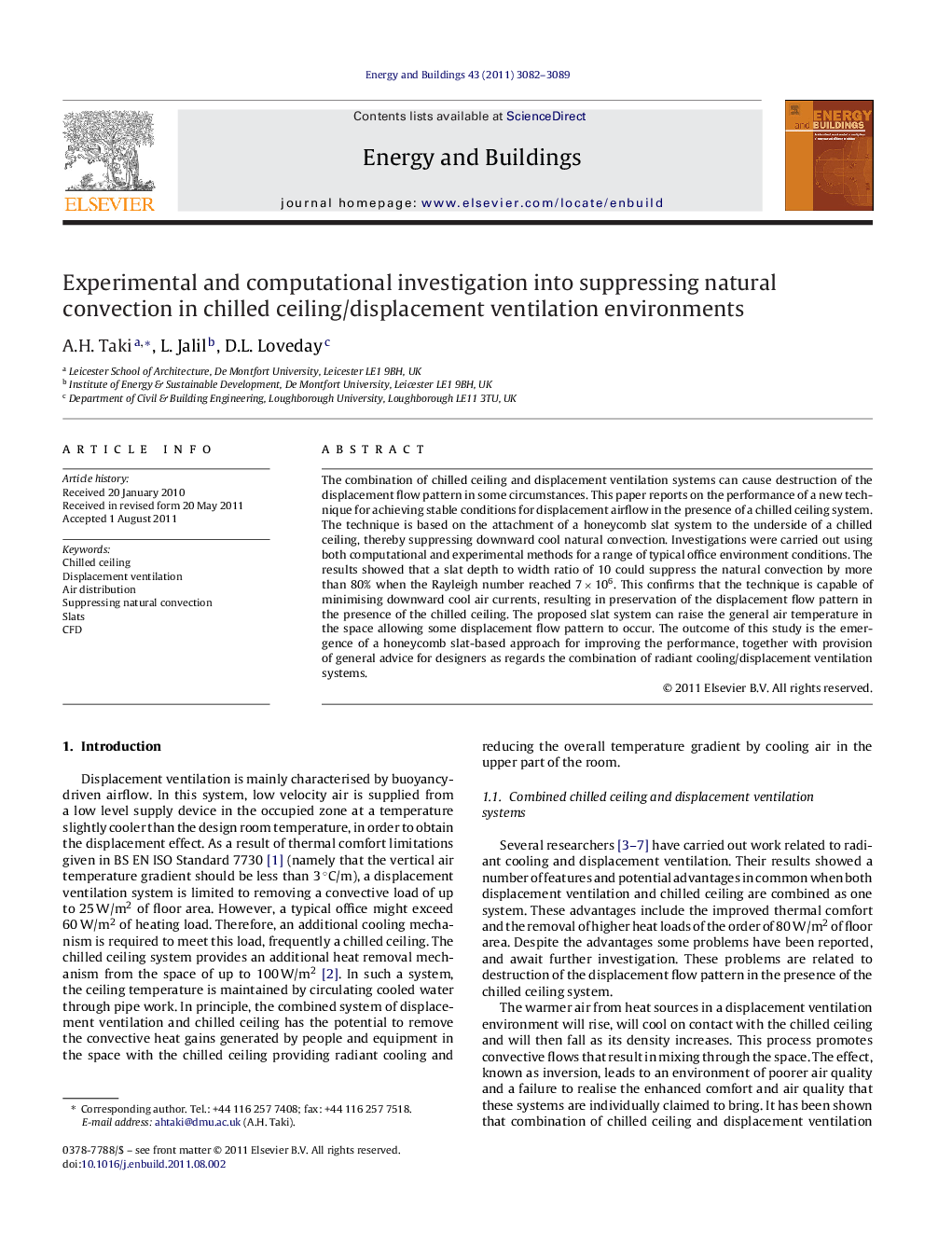| Article ID | Journal | Published Year | Pages | File Type |
|---|---|---|---|---|
| 264126 | Energy and Buildings | 2011 | 8 Pages |
The combination of chilled ceiling and displacement ventilation systems can cause destruction of the displacement flow pattern in some circumstances. This paper reports on the performance of a new technique for achieving stable conditions for displacement airflow in the presence of a chilled ceiling system. The technique is based on the attachment of a honeycomb slat system to the underside of a chilled ceiling, thereby suppressing downward cool natural convection. Investigations were carried out using both computational and experimental methods for a range of typical office environment conditions. The results showed that a slat depth to width ratio of 10 could suppress the natural convection by more than 80% when the Rayleigh number reached 7 × 106. This confirms that the technique is capable of minimising downward cool air currents, resulting in preservation of the displacement flow pattern in the presence of the chilled ceiling. The proposed slat system can raise the general air temperature in the space allowing some displacement flow pattern to occur. The outcome of this study is the emergence of a honeycomb slat-based approach for improving the performance, together with provision of general advice for designers as regards the combination of radiant cooling/displacement ventilation systems.
► Chilled ceiling and displacement ventilation can destruct displacement flow pattern. ► The attachment of a honeycomb slat system can suppress natural convection. ► A slat depth to width ratio of 10 suppresses natural convection by 80% with Ra = 7 × 106.
